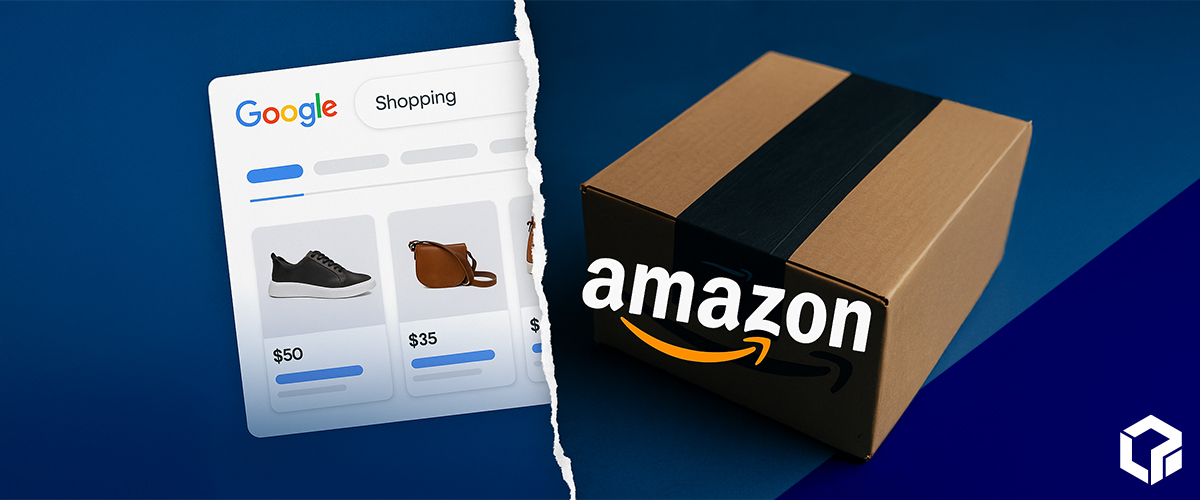If you’re running a successful e-commerce business, chances are you’ve considered expanding your brand to Amazon. After all, over half of product searches begin on Amazon, making it an absolute powerhouse for online retailers. But listing your products on this site is just the beginning. To truly stand out in this competitive marketplace, you’ll need to master two key strategies: Amazon PPC (pay-per-click) advertising and Amazon SEO (search engine optimization).
At first glance, these two approaches may seem like separate entities. One is paid; the other is “free.” One produces instant results; the other is more gradual. However, focusing on just one could mean missing out on huge opportunities to grow your visibility, boost sales, and maximize your ROI.
Instead, it’s time to view Amazon PPC and Amazon SEO as two sides of the same coin. Together, these strategies form a symbiotic relationship that can propel your company to new heights. To effectively drive traffic, increase visibility, and boost sales, businesses must leverage the power of both Amazon PPC and Amazon SEO, as each plays a critical role in a well-rounded marketing strategy.
What Is Amazon PPC and How Does It Work?

Amazon PPC is a paid advertising system where sellers bid on specific keywords to increase the visibility of their products. It essentially allows businesses to cut through the clutter and get their items in front of customers who are actively searching for them. Let’s dive into how it works in practice.
Amazon’s system relies on a bidding structure. Sellers bid on keywords they believe their target audience will search for. Once someone types in that keyword, Amazon runs an auction behind the scenes to decide whose ad appears. Winning this auction depends not just on the amount bid but also the relevance and performance of the ad.
Ads on Amazon come in three main types. “Sponsored Products” target individual product listings, “Sponsored Brands” promote brand portfolios or catalogs, and “Sponsored Display” retargets customers who’ve browsed or purchased complementary items.
The beauty of PPC lies in its pay-per-click model. You only incur costs when potential customers click your ad, making it a cost-efficient way to generate traffic to your listings. Armed with important metrics like ACOS (advertising cost of sales), CTR (click-through rate), and ROAS (return on ad spend), sellers can monitor and fine-tune campaigns for optimal performance.
Why Amazon PPC Matters
The immediate visibility PPC provides is one of its standout benefits. Your ad can appear at the top of search results or on competing product pages, resulting in a significant uptick in traffic. But there’s more to it than instant sales. PPC campaigns often accelerate a product’s sale velocity, which signals to Amazon’s ranking algorithm that the product is in demand. Consequently, this can positively impact your organic rankings, too.
What Is Amazon SEO and How Does It Work?

On the other side of the equation, Amazon SEO focuses on improving your product’s organic visibility, helping it rank higher in unpaid search results. Amazon’s A9 algorithm plays a central role here, prioritizing products based on relevance and sales performance.
When it comes to optimizing your product listings, relevant keywords are fundamental to your success. Titles, bullet points, and descriptions all inform the algorithm whether a product matches a shopper’s search intent. However, keyword placement isn’t the only factor. Backend search terms (hidden keywords) also expand the presence of a listing.
That said, ranking well isn’t just about these keywords and where they’re placed. Conversion rate plays a huge role in SEO success. High-quality product images, persuasive descriptions, and positive review counts all contribute to better rankings by building shopper trust and driving sales. Product sales performance serves as a signal to Amazon that your item is relevant, further solidifying its place higher in search results.
Why Amazon SEO Matters
Amazon SEO offers businesses sustainable, long-term benefits. Unlike PPC, which requires ongoing budget allocation, SEO enables visibility without incurring incremental costs per sale. This means higher profit margins as free organic traffic grows. But the benefits go even further. Perfecting your SEO improves your conversion rate, which in turn increases the effectiveness of your PPC campaigns. When listings are optimized, any traffic you drive through ads is more likely to convert, reducing wasted ad spend and improving ROI.
PPC and SEO Are Stronger Together
Though Amazon PPC and Amazon SEO serve distinct purposes, their strengths are amplified when used together, which is why your business needs both. PPC offers immediate visibility, allowing new products to gain traction and visibility faster than relying on organic rankings alone. For example, when running a “Sponsored Product” campaign, the sales generated contribute directly to metrics that improve that product’s organic ranking in Amazon’s search results.
Similarly, an optimized listing doesn’t just help boost organic rankings; it also improves ad performance. Imagine bidding on a competitive keyword through PPC. If your product listing contains compelling images, strong copy, and relevant keywords, potential customers are more likely to click through and make a purchase. This drives a positive feedback loop: better sales performance improves your SEO ranking, which in turn makes your future PPC efforts more efficient.
The synergy between PPC and SEO means that, over time, you can rely more on organic traffic for consistent sales while using PPC strategically for launches or during peak seasons. It’ll help you make the most of your marketing spend.
How To Build the Perfect PPC/SEO Strategy

Combining PPC and SEO effectively begins with coordinated keyword research. Identifying high-value terms for both paid ad campaigns and organic optimizations ensures your strategy is aligned from the start. Tracking PPC data can further inform SEO refinements. For instance, if a particular ad keyword consistently converts well, incorporating it into your product title or backend search terms can amplify your organic reach.
You must also optimize product listings for both approaches. High-quality content enhances SEO rankings while making ad clicks more likely to convert. It’s important to monitor performance continuously, testing new strategies and adapting as needed to ensure long-term success.
Avoiding Common Pitfalls
Some businesses make the mistake of focusing entirely on PPC, considering SEO an afterthought. Others fail to optimize their product listings, letting weak content undermine the effectiveness of both paid and organic strategies. A lack of testing, whether on ad creative or listing formats, is also a pitfall that some companies fall into. To avoid these mistakes, commitment to both disciplines and regular performance evaluations are key.
Drive Sales and Growth With a Comprehensive Approach
The most important thing to remember is that Amazon is not just a marketplace; it’s a competitive ecosystem where visibility and sales depend on a strategic approach. By integrating Amazon PPC and SEO, your business can achieve immediate and lasting growth, unlocking opportunities to scale.
If you want to ensure you start this process on the right foot, Logical Position’s Amazon advertising solutions might be your best bet for doing so. We’ll help you plan your integrated Amazon strategy, optimizing it to its maximum potential, so you can sit back and watch your e-commerce business thrive.





